 11 December 2019
Water abundance lower than expected on exoplanets
11 December 2019
Water abundance lower than expected on exoplanets
... of potassium (K), and that 14 of the 19 planets also contained water. However, the overall trend in H2O abundances, from mini-Neptunes to hot Jupiters, is significantly lower when compared with the metal abundances for the Solar System (in astronomy...
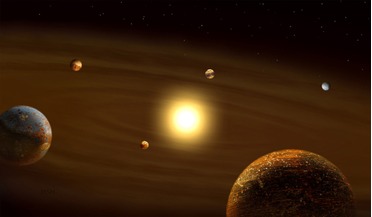 17 April 2020
A six-planet system is discovered and more could be hiding say astronomers
17 April 2020
A six-planet system is discovered and more could be hiding say astronomers
... Observatory in the South of France, astronomers have discovered a six planet system containing a "super-Earth" and five "mini-Neptunes,” all with exceptionally regular spacing; a feature which hints at how the system may have formed. Approximately...
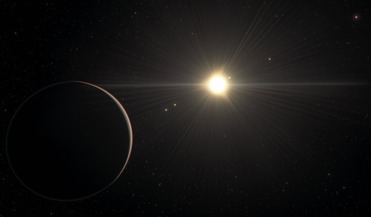 25 January 2021
Unique six-exoplanet system challenges theories of how planets form
25 January 2021
Unique six-exoplanet system challenges theories of how planets form
... in Astronomy & Astrophysics. The observations showed that TOI-178 harboured at least six planets in the super-Earth to mini-Neptune regimes, with orbital periods lasting from just under two days to just over 20 days. Exciting as the...
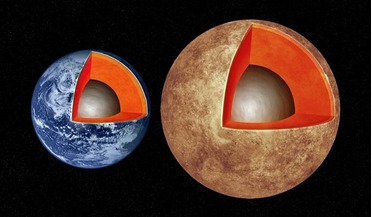 09 February 2016
Are Earth-like worlds built like Earth?
09 February 2016
Are Earth-like worlds built like Earth?
...but theoretical models of planet formation predict that planets intermediate in size between Earth and Neptune could be gaseous ‘mini- Neptunes,’ rocky ‘Super-Earths,’ or indeed water worlds, thus adding to the uncertainty in planet structures. After...
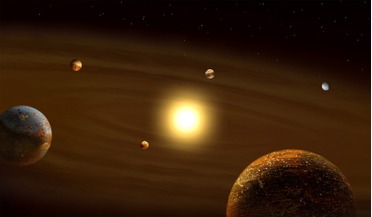 27 July 2019
Hundreds of new planet candidates detected by Kepler
27 July 2019
Hundreds of new planet candidates detected by Kepler
... Gap describes what seems to be an apparent lack of planets with sizes between 1.5 to 3.8 Earth radii – the super-Earth to mini-Neptune class of exoplanet. Why would planets of this size appear to be rare? One explanation to account for the anomaly...
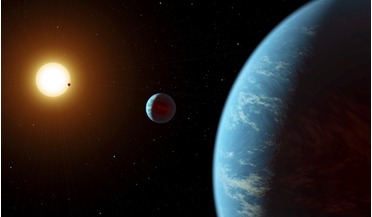 19 October 2020
Astronomers identify a true water-world that could have an ocean over 100 kms deep
19 October 2020
Astronomers identify a true water-world that could have an ocean over 100 kms deep
.... And unfortunately the transits of this planet candidate, which is on the border between that of a super-Earth and a mini-Neptune, will not be visible in the re-observation of this star in TESS cycle 3. In addition, the team suggest that the...